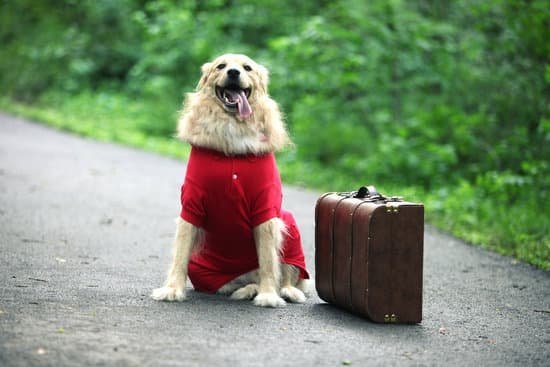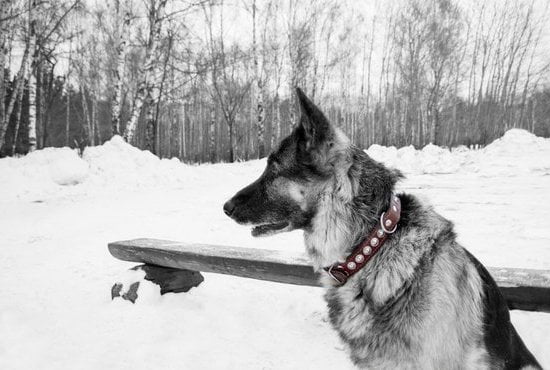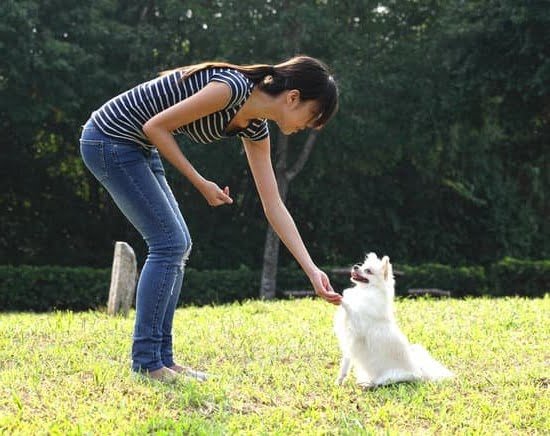Introduction
An older rescue dog has so much love to give, and they can make wonderful, loyal companions. They are also often in need of special attention when it comes to the training process. Many rescue dogs have never had any professional training and may be used to living by their own rules. Training an older rescue dog is essential for teaching them basic obedience commands, helping them with behavioral issues that may have resulted from a lack of guidance, and instilling good habits to keep them healthy and safe.
With patience, consistency, and positive reinforcement techniques, owners can help rescue dogs become obedient and able to take direction from humans. It’s important when training an older rescue dog to provide the appropriate type of leadership — that means providing the right amount of structure without being too demanding or controlling.
It can also be helpful to approach training with smaller goals in mind rather than expecting too much progress at once. Start by using rewards—such as verbal praises or treats — so that your rescue dog begins to associate good behavior with positive outcomes. After building up trust, practice short but consistent sessions every day as this will help your rescue dog learn faster in a more relaxed environment rather than feeling pressured or overwhelmed. If your pet is struggling with responding quickly enough during exercises, use additional gentle reminders such as hand signals or teach words associated with those commands so they are better understood. Lastly, be patient – many behaviors require repetition over time before they become more concrete habits – but it’s worth the time and effort you put into it!
Understanding Your Older Rescue Dog
Training an older dog that is a rescue can be a little challenging, but it doesn’t have to be. The key is first understanding your new pup and building trust with them. Start by getting to know their temperament and personality. Though every dog has their own unique traits, some breeds are known to exhibit certain characteristics more commonly. Take the time to familiarize yourself with the more common behaviors of that particular breed. Try learning from fellow owners and observing your new pet’s behavior on its own. Have conversations with the staff at the shelter or rescue clinic where you retrieved your furry friend – they may have insight on its past experiences which can help you while training later on. Continue building trust by introducing your pup to various people and places as well as offering rewards for good behavior paired with verbal praise or physical affection when appropriate. Finally, when ready, begin consistent training starting with basic commands like “sit” and “stay” before attempting more difficult exercises like recall and agility drills or tricks Down the line, remember that patience will always be essential; you don’t want your pup to feel overwhelmed or pressured while adjusting to a new lifestyle. If you plan ahead and take these steps into consideration carefully, you’ll be sure set up both of you for success!
Establishing Rules and Boundaries
When training an older rescue dog, it is important to establish rules and boundaries. This should include where the dog can go inside and outside of the home, what behaviors are acceptable and not acceptable, and rewarding good behavior. When introducing your new dog to its new home, it is a good idea to start by making sure they understand the boundaries you want to set in place. Show them which areas they can explore and those that are off-limits. Let them know what behaviors are allowed or not allowed such as chewing furniture or barking incessantly. For the majority of commands like “sit”, “stay”, “down”, or “come”, be consistent with offering treats or rewards when they display these behaviors. Set up training sessions every day so that your older rescue dog understands what is expected of them in their new home environment, as well as how they can receive rewards for following these commands and displaying good behavior.
Creating a Positive Environment
When you welcome an older rescue dog into your home, it’s important to create a safe and positive environment in which the dog can thrive. This means providing ample physical and emotional care so that the pup can settle into their “forever” home.
Make sure your house is clean, well organized, and clutter-free so the dog doesn’t feel overwhelmed or disoriented when exploring new areas. Provide plenty of places for them to retreat such as a crate or bed in a quiet corner where they can rest peacefully. It may take some time for them to adjust, so be patient and understanding with their needs and feelings during this transition.
Introduce everybody in the household slowly and give the pup enough time to become comfortable with each family member. This will help build trust between everyone involved as well as make training easier since the pup will have learned to associate humans with affection and praise. If possible, try to find out as much background information about the rescue dog’s former life as this could give you an insight into their behaviour and personality.
Provide consistent routines such as specific times for play, meals, potty breaks, and sleep which eliminates confusion and allows them to stay on track while transitioning into a new home. Dedicate plenty of quality time playing together outside each day if possible – this will help provide stimulation both mentally and physically as well as improve your relationship with your pup. Offer treats during training sessions or when trying something new for extra motivation but just keep in mind that not all treats are suitable for every age so make sure to speak to your vet first before giving anything out!
Gaining Attention and Redirecting Reactions
When training an older rescue dog, gaining their attention and redirecting their reactions is key. Start by offering your adopted dog treats as rewards, so they will associate positive behavior with reinforcement. Be sure to keep the treat offerings varied; use different types of treats like chicken jerky, pieces of cheese, or cold cuts to ensure your pup remains motivated during training sessions. When your pup is exhibiting a negative reaction to something, try giving him a command such as sit or lie down and then rewarding him for following it with praise or a treat. This will help your pup learn what type of behavior is acceptable rather than be rewarded for negative reactions. Additionally, it’s important to stay consistent when offering rewards and give them at the exact moment they are doing something right—this timing helps build the puppy’s association between correct actions and reward quickly. As the weeks go by, your pup will be less reactive and more attentive to commands, allowing you to offer less-desirable rewards like verbal praise instead of treats as incentive for good behavior.
Rewarding Positive Behaviour
Training an older rescue dog can be a daunting task, but with the right approach and patience you will be rewarded with a well-behaved pet in no time. The most important thing to remember when training an older rescue dog is to reward positive behaviour. Treats are an excellent way to show your new pup that you appreciate them for doing something good. Try finding healthy reward treats such as small pieces of cooked chicken or cheese, which will encourage them without giving them unhealthy foodk. Also make sure to use praise and rewards whenever they accomplish something correctly. Praise will reinforce their plenty learning behavior and help build a bond between you and your new friend. Always remember that the act of contributing is the best reward and praise! Even if your pooch doesn’t obey on the first attempt, be sure to encourage them for trying!
Understanding Crate Training for Older Rescue Dogs
Training an older rescue dog requires patience, kindness and consistency – but it’s certainly not impossible. Although their overall health may be a bit fragile, with an abundance of love and the right practices in place, you can still enjoy a happy and healthy relationship with your canine companion. One important training practice is crate training – however if an older rescue dog has anxiety issues, then this approach might need to be tempered according to the individual’s needs.
Crate training involves using a crate as a ‘den’ or safe space – allowing the dog to have their own secure place to retreat when feeling fearful or overwhelmed. When first introducing the crate, provide plenty of treats and toys inside so that the dog starts to view it as somewhere enjoyable. As they establish more trust in you, gradually begin closing them inside for brief periods of time and leave them alone in order for them to become comfortable without you there. When reuniting with your pup after being apart, offer words of praise while keeping things low-key; over-the-top gestures might have a negative effect on them.
Once the rescue dog is used to being placed in their crate from time to time, it’s also important that they learn basic obedience commands such as “sit”, “stay” or “come”. Positive reinforcement techniques such as treats and verbal praise will help teach these behaviours in a gentle way that honours their age and experience. Most importantly, resist any urge you may feel to scold your pup if they don’t respond immediately – instead just remain patient and nurture their progress step by step. With love and compassion – plus lots of rewards – your beloved senior pooch will be happy to follow all your cues very soon!
Conditioning on a Leash
Leash training an older rescue dog is important in helping them adjust to their new home and environment. Before beginning any leash training with an older rescue dog, it’s important to ensure that they are comfortable with the leash and wear it comfortably. Start by allowing your dog to walk around the house wearing the leash – if they seem scared or uncomfortable, take a few steps back and introduce them to the leash at a slower pace. Show them how to properly wear it by putting it on them gently and rewarding them for good behavior.
When your dog becomes more comfortable with the leash, you can begin teaching them basic commands such as sit and stay. When giving these commands, make sure to reward positive behaviors with treats, toys or verbal praise. You may even want to give your pet multiple rewards for positive behaviors so that they remain focused and eager during their training sessions. Additionally, try not to scold your dog if they make mistakes because this may only cause them to become fearful or resistant to learning new commands. If necessary, you can redirect them away from specific behaviors but be sure that you maintain a consistent method of correction while encouraging obedience through direction rather than force or punishment.
Finally, establish regular walks during which you can practice commands such as heel and recall in unfamiliar environments. It is important for an older rescue dog to experience various types of surfaces and locations so that their coat will become used to it in case of unexpected changes when walking elsewhere in the future. By reinforcing positive behavior both indoors and outdoors using gentle methods of correction, a rescue pup can quickly learn how to behave on a leash within new environments in no time!
Dealing with Problem Behaviours
Training an older rescue dog presents a unique set of challenges and rewards. Before beginning the training process, it is important to be aware of any problem behaviours your adopted pet may present with as a result of their past experiences. Common problem behaviours can include excessive barking, biting, chewing on furniture, or jumping up on people.
In order to effectively address these issues, it is best to take a force-free approach; never use punishments or physical corrections as this will only add stress and further reinforce unruly behaviour. Instead, work on building positive associations and rewarding desirable behaviour. Take the time to teach basic obedience commands such as sit, stay and come when called as tools for communication between you and your dog. Aim to create routines for feeding times and exercising them regularly; doing so allows your rescue pup to feel secure in their new home and that they have structure.
Additionally, provide lots of mental stimulation by teaching them new tricks or exposing them to new environments where they can experience positive reinforcement in the form of treats or toys. Socialization with other dogs and people is key in helping rescued dogs learn how to behave properly in different situations. Finally, maintain consistent communication between yourself and the trainers you enlist for assistance; this will help gauge progress made over time and help catch any potential roadblocks early on before any bad habits are cemented too deeply in your pup’s behaviour. Remember that patience is essential during the process!
Socialising With Other Pets
When it comes to socialising an older rescue dog, it is important to take things slowly. Start by introducing your dog to new people and animals in a safe and comfortable environment, such as a park or your own backyard. Providing your dog with treats can help create positive associations and you should provide plenty of verbal praise when they behave appropriately around others. If there are other animals nearby that you want the dog to interact with, make sure to approach them slowly, without making contact between them until the dog is relaxed and comfortable. Taking the time to let the two animals introduce themselves at their own pace will help ensure that everyone remains safe while they get used to each other’s presence. You could also consider enrolling your older rescue dog in puppy socialisation classes or doggy daycare so they can become accustomed to being around other dogs in a controlled setting. Building positive relationships between your rescue dog and other pets over time will help them feel more secure, which leads to better behaviour overall.
Ongoing Training and Maintenance
Training an older rescue dog is different than training a puppy, as their behavior and habits have already been established. Training should focus on maintaining existing behaviors while reinforcing them with rewards and praise; building trust and confidence between pet and owner; and redirecting unwanted behaviors in constructive ways.
It’s important to remain patient and consistent when training an older rescue dog. Training should occur multiple times a day, ideally lasting 15-20 minutes per session. Depending on the dog’s responses, try positive reinforcement techniques such as offering treats for correct responses,clicker training, leash walking, and basic commands like sit, stay, come, down etc. Also consider establishing a routine of regular exercise and interactive playtime such as fetch or hide-and-seek games: these activities provide mental stimulation that help reinforce positive behavior around other people and animals. Lastly, proper socialization to people and other animals is hugely beneficial for any senior dog—this requires providing rewarding experiences by gentle petting from kind hands during walks or visits from family/friends in a comfortable home environment. All of these strategies will help develop healthy relationships between pet parent and pup while cultivating long-term habits.
Conclusion
Dogs of any age rescued from a shelter are incredibly rewarding to adopt. For starters, older rescue dogs tend to be calmer and better suited for a domestic lifestyle than younger pets. They are also more likely to show you love and loyalty right away since they may have spent much of their life looking for companionship and love. In addition, taking an older dog out of the shelter offer them an opportunity to start a new chapter in life with a loving home and stable environment.
Adopting an older rescue dog can be one of the best decisions you make on behalf of your family. Bringing them into your home will require patience, consistency, and understanding so that you can help build trust between the two of you. Once this bond is built, you will quickly learn just how rewarding it can be as your pet adores and loves you just as much as you adore and love them. It’s not always easy but being able to help a pup who was in need is so noble—you get far more out of it than what you give in return. Your reward will come in the form of loyalty, comfort, joy, companionship — all the sweet little things that really add up over time! Whether they were surrendered or abandoned by owners in the past, all dogs deserve a fresh chance at life-filled with happy memories made with their forever families!

Welcome to the blog! I am a professional dog trainer and have been working with dogs for many years. In this blog, I will be discussing various topics related to dog training, including tips, tricks, and advice. I hope you find this information helpful and informative. Thanks for reading!





